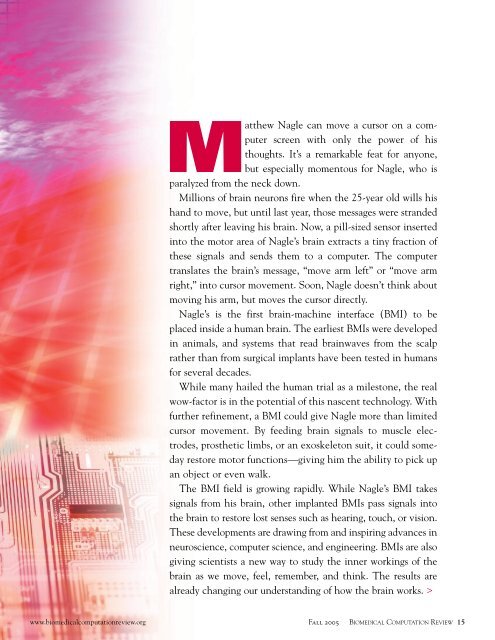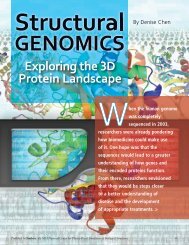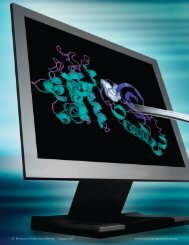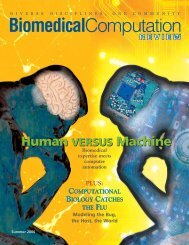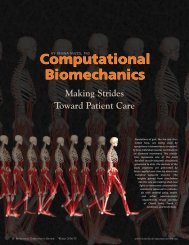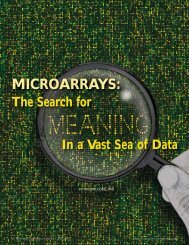here - Biomedical Computation Review
here - Biomedical Computation Review
here - Biomedical Computation Review
Create successful ePaper yourself
Turn your PDF publications into a flip-book with our unique Google optimized e-Paper software.
Matthew Nagle can move a cursor on a computerscreen with only the power of histhoughts. It’s a remarkable feat for anyone,but especially momentous for Nagle, who isparalyzed from the neck down.Millions of brain neurons fire when the 25-year old wills hishand to move, but until last year, those messages were strandedshortly after leaving his brain. Now, a pill-sized sensor insertedinto the motor area of Nagle’s brain extracts a tiny fraction ofthese signals and sends them to a computer. The computertranslates the brain’s message, “move arm left” or “move armright,” into cursor movement. Soon, Nagle doesn’t think aboutmoving his arm, but moves the cursor directly.Nagle’s is the first brain-machine interface (BMI) to beplaced inside a human brain. The earliest BMIs were developedin animals, and systems that read brainwaves from the scalprather than from surgical implants have been tested in humansfor several decades.While many hailed the human trial as a milestone, the realwow-factor is in the potential of this nascent technology. Withfurther refinement, a BMI could give Nagle more than limitedcursor movement. By feeding brain signals to muscle electrodes,prosthetic limbs, or an exoskeleton suit, it could somedayrestore motor functions—giving him the ability to pick upan object or even walk.The BMI field is growing rapidly. While Nagle’s BMI takessignals from his brain, other implanted BMIs pass signals intothe brain to restore lost senses such as hearing, touch, or vision.These developments are drawing from and inspiring advances inneuroscience, computer science, and engineering. BMIs are alsogiving scientists a new way to study the inner workings of thebrain as we move, feel, remember, and think. The results arealready changing our understanding of how the brain works. >www.biomedicalcomputationreview.orgFall 2005 BIOMEDICAL COMPUTATION REVIEW 15


